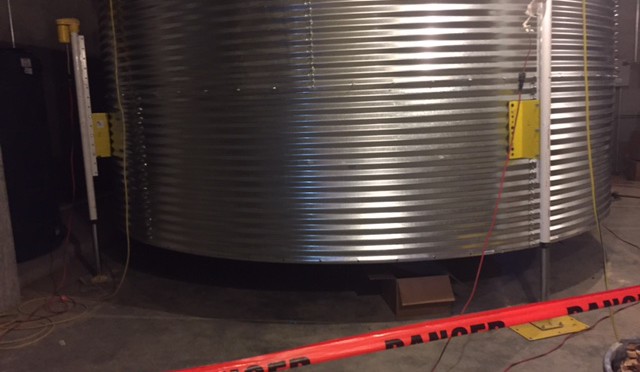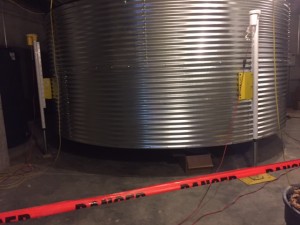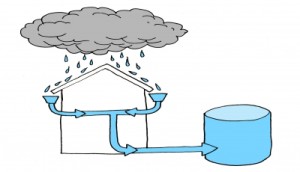
Rainwater collection is growing in popularity in the United States, including here in the Seattle area. Many commercial and residential new construction projects are discovering that rainwater collection can save costs on complying with the mandated GSI (green storm water infrastructure) of infiltration on site while saving water use and energy at the same time.
Treating water for potable standards is not energy efficient for municipal water districts. Even though water is cheap for the consumer, it does require high costs to maintain this level of quality to potable standards. The reason the costs are low to the consumer is because of the large amounts of water being sold to manufacturing and farming. On a large scale, reducing the energy needed by using untreated water for toilet flushing and laundry facilities could reduce the costs of water from these water districts. Imagine the reduction of energy saved if all commercial new construction implemented RWC for this use only.
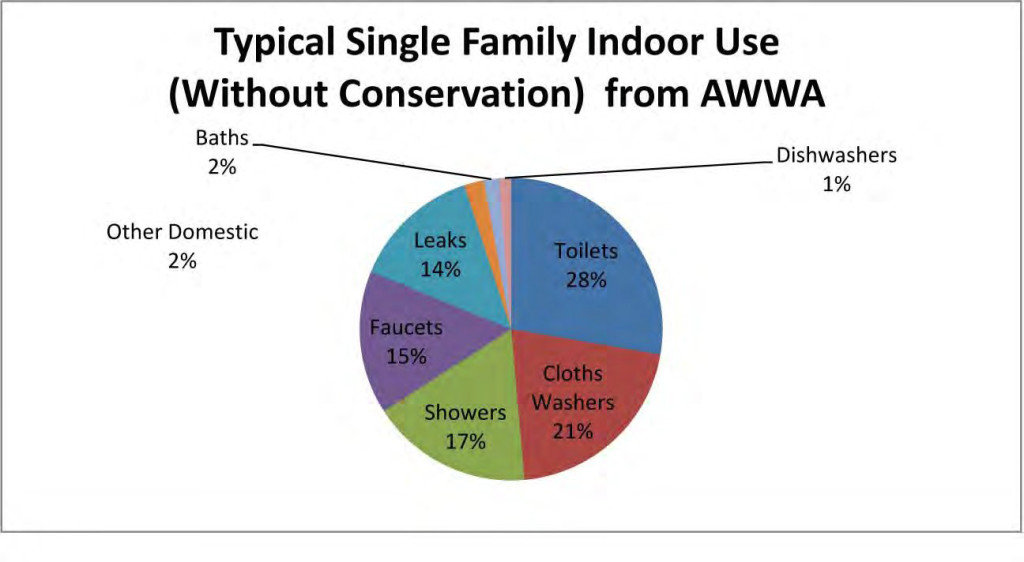 Based on this chart from the American Water Works Association (AWWA) toilets make up 28% of residential water consumption without conservation and laundry 21%. The use of high efficiency toilets, washing machines and low flow devices will reduce the amounts even more. A simple rainwater collection system for toilet and laundry will reduce household demand of municipal water by 49%. Imagine the savings on a larger scale for energy, storm water runoff, depletion of our aquifers, and demands on a centralized water system.
Based on this chart from the American Water Works Association (AWWA) toilets make up 28% of residential water consumption without conservation and laundry 21%. The use of high efficiency toilets, washing machines and low flow devices will reduce the amounts even more. A simple rainwater collection system for toilet and laundry will reduce household demand of municipal water by 49%. Imagine the savings on a larger scale for energy, storm water runoff, depletion of our aquifers, and demands on a centralized water system.
Every drop of water is important and we can make smart choices about where every drop goes.
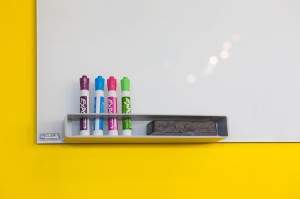 If you are an interested individual or a professional seeking educational development courses and workshops on rainwater harvesting for residential, commercial, potable or non-potable systems, you should visit ARCSA’s website to sign up for a course or webinar. For more information about ARCSA’s professional development programs and workshops, click here.
If you are an interested individual or a professional seeking educational development courses and workshops on rainwater harvesting for residential, commercial, potable or non-potable systems, you should visit ARCSA’s website to sign up for a course or webinar. For more information about ARCSA’s professional development programs and workshops, click here.
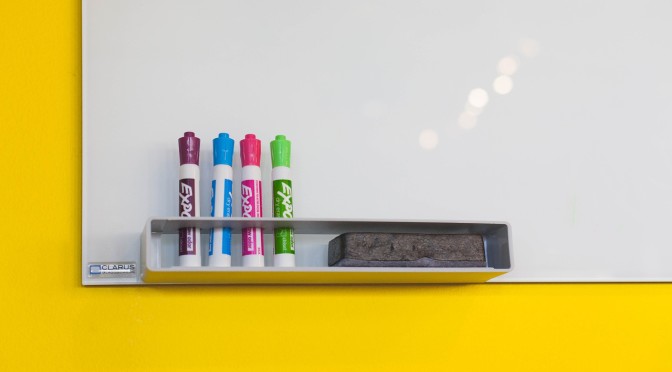
 Based on this chart from the
Based on this chart from the 